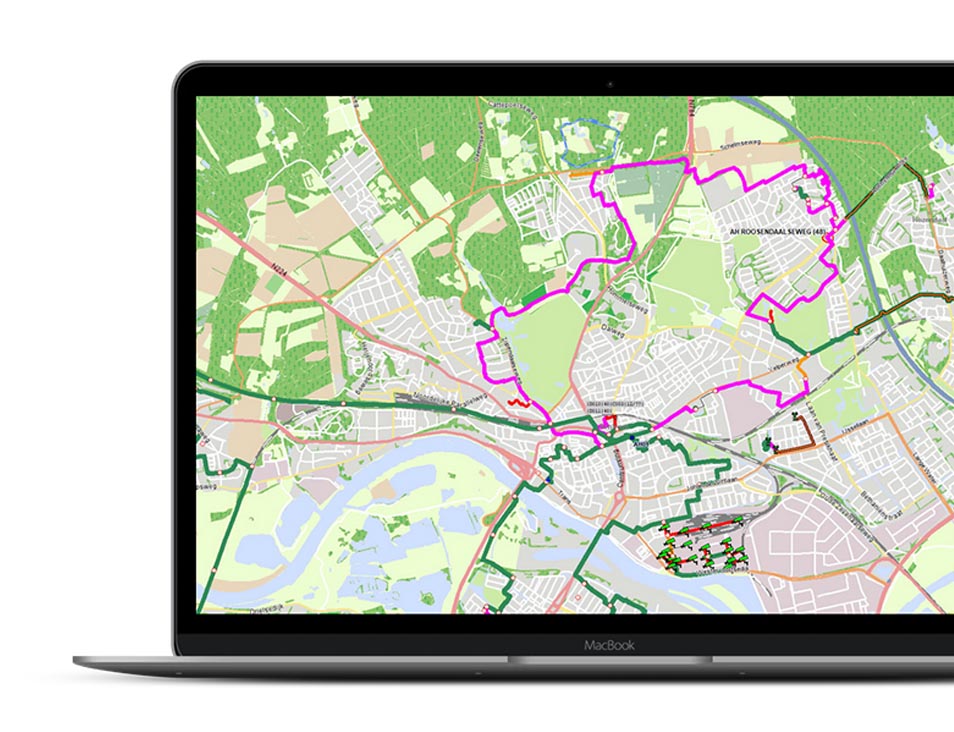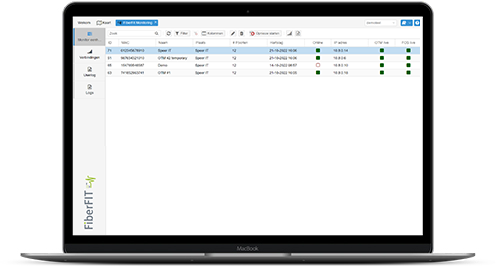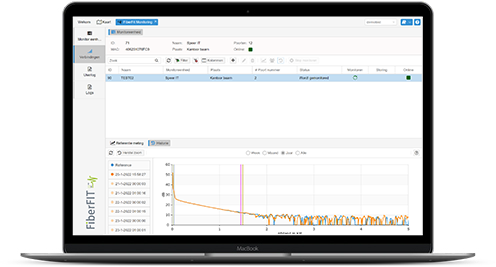FiberFIT Monitoring: advanced monitoring of your fiber optic network
The strength of FiberFit is that network problems become immediately visible in the context of the entire network. Which customers are affected? Are bypasses possible? Do I have multiple failures in this area?
High network availability
FiberFIT Monitoring
This is how it works.
We physically connect monitoring units to the fiber optic network. And we create a link with intelligent software. The units continuously measure glass fibers and send the results to the cloud. The data processing and further control is done online. So, you can do that anytime, anywhere. On any device.
With FiberFIT Monitoring, you always have immediate insight into a possible network problem. What’s more, you can respond and fix it quickly. The result: higher network availability.
The status (monitoring) of the network can be viewed in real time within the software. Connections light up to warn you immediately when there are problems.

Network security
Monitoring, alarm, measurement and degradation analysis.
FiberFIT Monitoring stands for network security. Constant monitoring of your fiber optic network enables timely intervention.
The main functions of FiberFIT Monitoring:
Monitoring and alarm.
Monitoring of fiber optic processes through continuous physical network monitoring and alarm in case of problems.

Monitoring of the physical network, OSI layer 1
Intrusion-detection (tap-detection)
Live Fiber Monitoring
Dark Fiber Monitoring
Notification in case of deviation from threshold(s)
Notification by email, API & dashboard
Flare and control relay contact(s) onsite
Measuring remotely.
Optical test modules continuously measure optical fibers (OTDR). The results are instantly available online anytime, anywhere.

Measurement of length, attenuation and reflection of connected optic fiber(s)
Remote Fiber Test System (RFTS)
Automatic, planned measurement
(Bi-directional measurement with 1 person)
(Unmanned PoP)
Degradation analysis..
By continuously monitoring and analysing the degradation of the fiber optic network, you can prevent problems.

Planned, periodic measurements
Analysis of changes due to e.g. degradation
Automatic triggers
Basis for further analysis; dependence on time, season, bandwidth, etc.
Fiber optic network security. That’s it.
Direct insight
FiberFIT Monitoring:
Benefit on many levels
The technology behind FiberFIT Monitoring is higher mathematics, but we can explain the advantages to you briefly and powerfully.
Efficient physical network monitoring + live dashboards + adjustable alarms = instant insight into the network problem + fast response + short recovery time.
The network owner can guarantee customers a higher availability, without having to use those customers’ equipment to report failures.
Smart link with CoconTheWeb
FiberFIT monitoring continuously measures glass fibers. The results can be sent to CoconTheWeb for data processing. Here you can also manage the client’s asset and maintain its value. CoconTheWeb enriches the FiberFIT Monitoring measurements with an exact location.
Within CoconTheWeb, the disruption is shown exactly on the map. This makes it possible to send service technicians directly to the exact location.
The results are displayed in real time within CoconTheWeb, visually on the map.
Lines light up if there are deviations. The impact of a possible malfunction is clear much faster because it can be seen instantly which customers are affected and whether a bypass is possible.
Cocon is the no. 1 fiber optic registration systems in the Netherlands.
FiberFIT Monitoring benefit per business area:
Operational
- Increase availability of fiber optic network thanks to quicker response time to problems
- Insight into performances of network administrator and installers
- Targeted approach to preventive maintenance
Asset management
- Optical performance of the network is continuously recorded
- Monitoring of physical network availability independent of an active (or service) layer
- Detection of optical taps (security breaches) possible
- Data known by fiber, location or network
Financial
- Approx. 2- to 4-hour time gain per malfunction/solution
- Knowing the location prevents need to drive to PoP. Malfunction measurement is available immediately.
- Time gain reduces loss for network owner and their customer(s)
- More use of network registration system, such as Cocon (investment benefit)
- Proactive physical network management is now possible (investment benefit)
Technical
- Distance (length of fiber): range of up to 200 km
- Can be used on both dark and live fiber
- System only consumes only up to 31W (per local system)
- Only 2HE (with 1 x 12 switch) 19″ of space required
- Cloud hardware: VPS, dedicated hosting, 99.99% uptime
Frequently asked questions .
Can FiberFIT Monitoring be applied to lit fiber optic?
Do I need a server to install software?
Does each optical test module need to be configured locally?
Is my data on the network safe while using FiberFIT Monitoring?
What is the maximum distance FiberFIT Monitoring can measure?
How can I be informed about a malfunction?
How is the connection with the cloud created?
How many fibers can I monitor with an optical test module?
Does Fiber Monitoring also store measurement data of the monitored optic fibers?
What will FiberFIT Monitoring do for me in the short term?
Would you like to find out more?
Are you the owner, manager or operator of a fiber optic network? And are you curious what FiberFIT Monitoring can do for you? Our specialists will be happy to assist you. Do you really want to find out how it works? Request a demo now.

Contact
FiberFIT
+31 (0)35-6237936
info@fiberfit.eu
